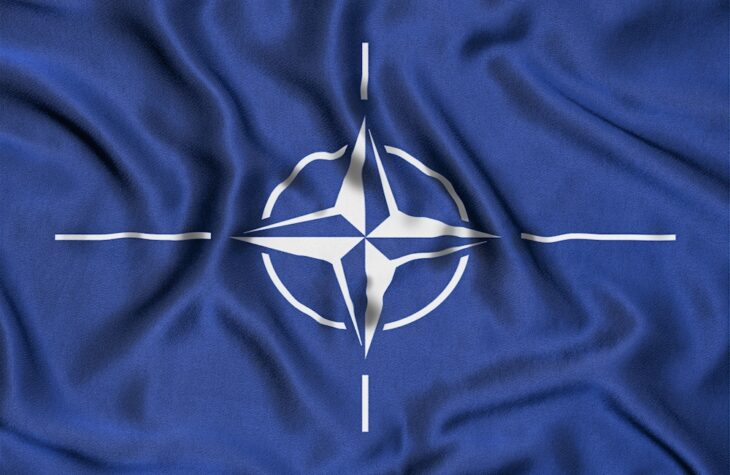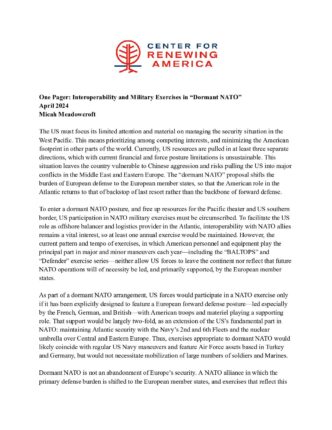
One Pager: Interoperability and Military Exercises in “Dormant NATO”
The US must focus its limited attention and material on managing the security situation in the West Pacific. This means prioritizing among competing interests, and minimizing the American footprint in other parts of the world. Currently, US resources are pulled in at least three separate directions, which with current financial and force posture limitations is unsustainable. This situation leaves the country vulnerable to Chinese aggression and risks pulling the US into major conflicts in the Middle East and Eastern Europe. The “dormant NATO” proposal shifts the burden of European defense to the European member states, so that the American role in the Atlantic returns to that of backstop of last resort rather than the backbone of forward defense.
To enter a dormant NATO posture, and free up resources for the Pacific theater and US southern border, US participation in NATO military exercises must be circumscribed. To facilitate the US role as offshore balancer and logistics provider in the Atlantic, interoperability with NATO allies remains a vital interest, so at least one annual exercise would be maintained. However, the current pattern and tempo of exercises, in which American personnel and equipment play the principal part in major and minor maneuvers each year—including the “BALTOPS” and “Defender” exercise series—neither allow US forces to leave the continent nor reflect that future NATO operations will of necessity be led, and primarily supported, by the European member states.
As part of a dormant NATO arrangement, US forces would participate in a NATO exercise only if it has been explicitly designed to feature a European forward defense posture—led especially by the French, German, and British—with American troops and materiel playing a supporting role. That support would be largely two-fold, as an extension of the US’s fundamental part in NATO: maintaining Atlantic security with the Navy’s 2nd and 6th Fleets and the nuclear umbrella over Central and Eastern Europe. Thus, exercises appropriate to dormant NATO would likely coincide with regular US Navy maneuvers and feature Air Force assets based in Turkey and Germany, but would not necessitate mobilization of large numbers of soldiers and Marines.
Dormant NATO is not an abandonment of Europe’s security. A NATO alliance in which the primary defense burden is shifted to the European member states, and exercises that reflect this new arrangement, will improve rather than diminish the continent’s defense, making the balance of power in Eurasia no longer dependent on the capacity of a distracted America. Any risk presented is for Europe’s principal powers to mitigate, stemming from inadequate funding of their defense or failure to maintain the security cooperation NATO provides, allowing Russia, or one of their own members, to upend the regional balance. The US must prioritize its interests and pressing needs and will, one way or another, in the end, focus its preparations on potential conflict far from the North Atlantic.
Additional Resources
Policy Brief: Pivoting the US Away from Europe to a Dormant NATO




